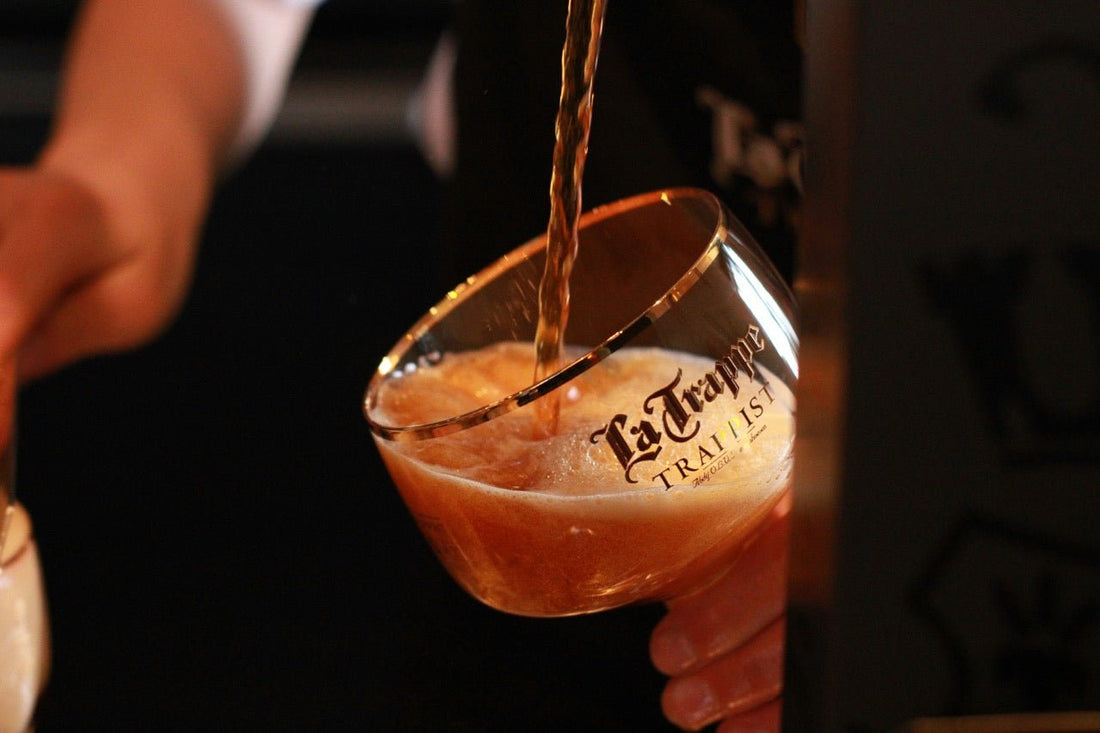Trappist beer is a fascinating world, steeped in history and tradition. Often associated with Belgian breweries, these beers are not only a delight for the taste buds, but also a source of confusion for many. In this blog we delve deeper into the three popular Trappist styles: the Dubbel, the Tripel and the Quadrupel. What are the characteristics of each of these beers and what makes them unique? Let's get started!
What are Trappist Beers?
Trappist beers are special because they are brewed by monks in Trappist abbeys. Although mainly associated with Belgium, there are also Trappist breweries in other countries, such as the Netherlands and the United States. The name "Trappist" is not only a reference to the place of production, but also to the methods and traditions used in the brewing process.
The origin of the term "Trappist" comes from the Abbey of La Trappe in France, where the brewing tradition began. The beers are usually dark and full-bodied, and they are often characterized by their rich flavors and aromas.
Trappist beers are divided into different styles, but the most popular are Dubbel, Tripel and Quadrupel. Each of these styles has its own unique characteristics and alcohol content.
Double: The First Step
The Dubbel, often referred to as "Dubel", is the first of the three styles we will discuss. It is a dark, full-bodied beer that is usually around 8% ABV (alcohol percentage). The Dubbel is rich with flavors of caramel, chocolate and dark fruits, making it a sweet and approachable option for beer lovers.
An example of a popular Dubbel is the Saint Bernardus Prior 8. This beer has a long shelf life and can be stored for up to four years. What really makes the Dubbel special is the brewing process, which includes both top fermentation and a second fermentation in the bottle. This creates a unique carbonation and complexity in the taste.
When tasting a Dubbel you can often expect notes of caramel, sweet berries and even a hint of chocolate. It is a perfect beer to enjoy with a meal or just on a quiet evening.
Tripel: The Refined Choice
The Tripel, often considered the most famous of the Trappist beers, has a slightly higher alcohol content of approximately 9.5%. This beer is lighter in color than the Dubbel, with a golden to amber hue. The Westmalle Tripel is a classic example of this style.
The aromas of a Tripel are intense and fruity, with hints of yeast and a slight bitterness. This makes it a refreshing choice, despite the higher alcohol content. The flavors are complex, with a mix of sweetness and a light spiciness, which gives it a unique drinking experience.
When tasting a Tripel you usually experience a balance between sweetness and bitterness, which makes it a versatile beer that goes well with different dishes. It is also a popular beer for people new to the world of Belgian beers.
Quadrupel: The Powerhouse
The Quadrupel, or "Quad", is the strongest of the three styles and typically has an alcohol content of around 10%. This beer is darker and richer than the Dubbel and Tripel, with complex flavors that range from sweet fruit to roasted malt.
An example of a Quadrupel is La Trappe Quadrupel. This beer has a deep amber color and a rich, full-bodied taste. The aromas are intense, with notes of dried fruit, caramel and a hint of spice. It is a beer that you should drink in moderation, given its higher alcohol content.
Quadrupels are often the perfect choice for cold winter evenings, when you are looking for a warming and full-bodied beer. The flavors are layered and can develop as the beer warms, providing an interesting drinking experience.
Conclusion: The Unique Features of Each Style
The world of Trappist beers is rich and diverse, with each style offering its own unique characteristics and flavors. Whether you prefer the sweetness of a Dubbel, the refinement of a Tripel or the power of a Quadrupel, there is something for everyone. It's important to remember that while there are general guidelines for each style, the specific flavors and aromas can vary between different breweries and beers.
If you haven't tried a Trappist beer before, now is the perfect time to do so. Try a few different styles and see which one appeals to you most. And who knows, you might discover your new favorite beer!





